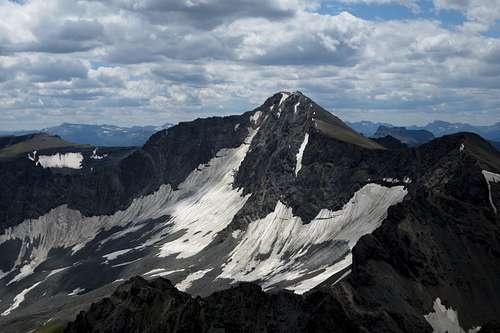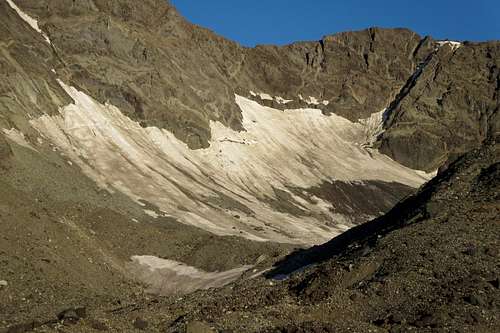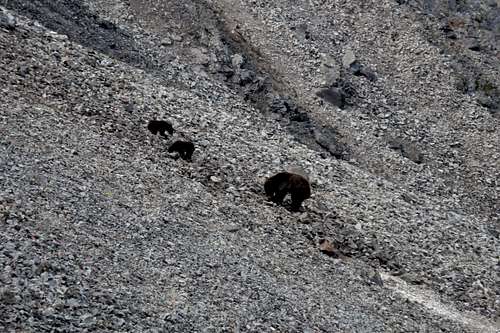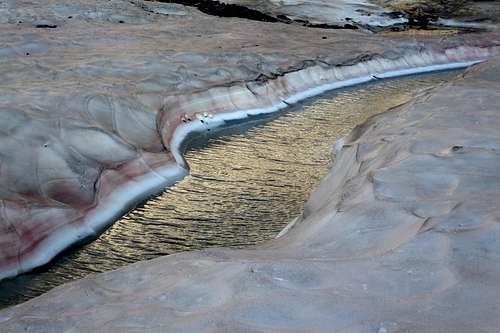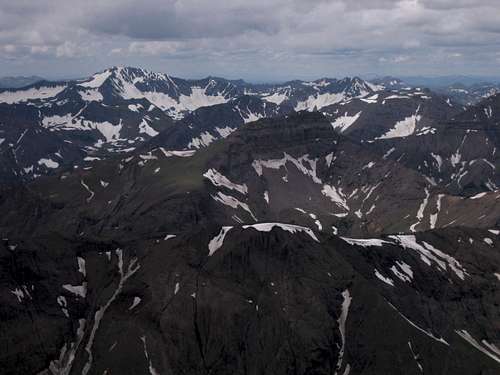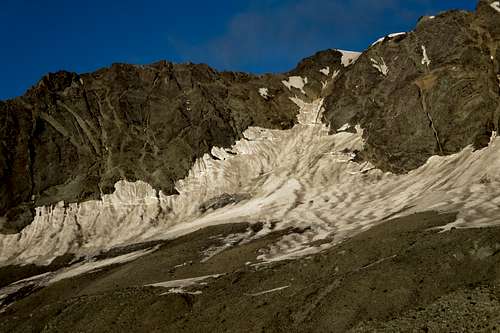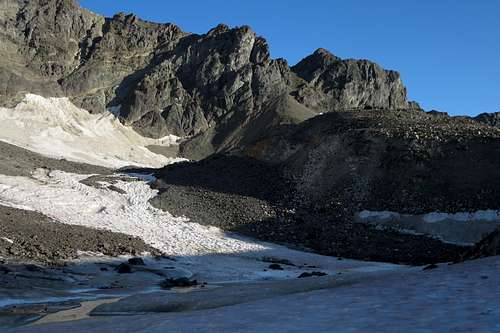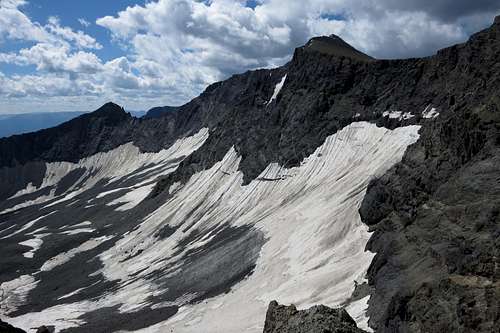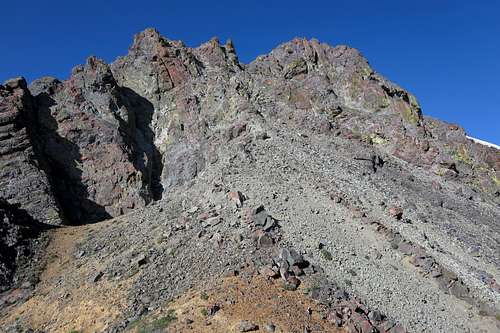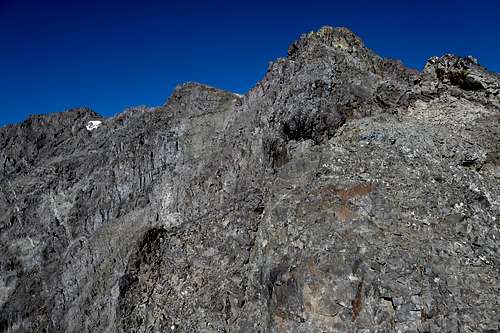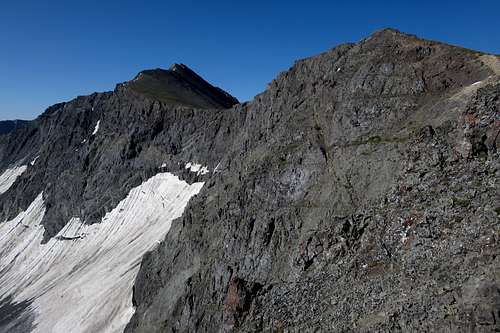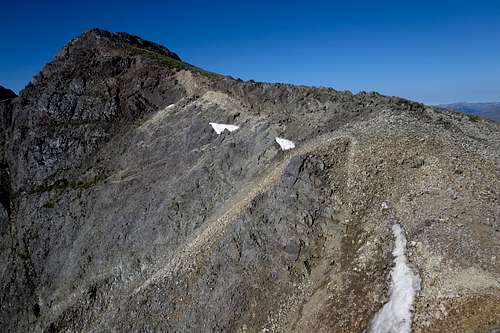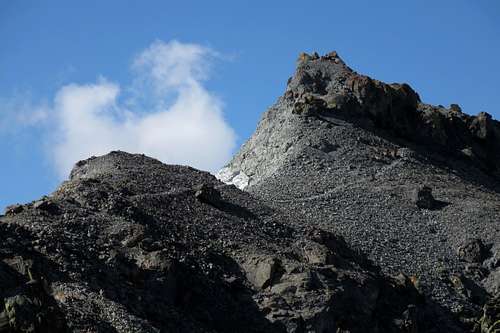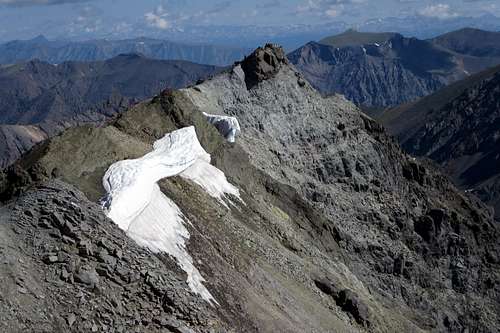-
 15268 Hits
15268 Hits
-
 87.21% Score
87.21% Score
-
 24 Votes
24 Votes
|
|
Mountain/Rock |
|---|---|
|
|
44.60924°N / 109.768°W |
|
|
Mountaineering, Scrambling |
|
|
Summer |
|
|
11922 ft / 3634 m |
|
|
Overview
Deep inside the wildest mountain range of the Lower 48 yet not so deep as to require several days to get to and from it, Sunlight Peak is one of the best mountaineering objectives in Greater Yellowstone for several reasons:
- Climbing it is neither very hard nor very easy.
- It is a beautiful mountain when viewed from any direction.
- From the summit, there are no views of towns or paved roads. There is an ocean of mountains.
- There is a [dying] glacier at its base, and many approaches will involve crossing that glacier.
- A Class 4/5 traverse to Stinkingwater Peak is possible.
- Since there was no register or cairn up top as of July 25, 2015, you might have the chance to be the first (or the latest) to mar this summit with your sign. Spray away!
- At the right (or wrong) time of summer, a climber may find himself or herself among so many grizzlies that it may seem as if life has become a National Geographic special.
Getting There
If you're solid on exposed, unprotected Class 3/4 rock in the mountains, then the crux might be the approach.Drive about 20 miles, past where state maintenance ends and the road gets narrower and rougher, to an unbridged crossing of Sunlight Creek. Shortly before this spot, there is a turnoff on the left side.
Route
This assumes you have hiked or driven to the aforementioned camping location. One-way distance from this point is about 3 miles, with an elevation gain of about 2600'.
Head up steep slopes to a moraine and then to what is left of the Sulphur Glacier. Head north along or beside the glacier (this is low-angle terrain and more snow than ice; crampons will usually be overkill) in a northerly direction to ugly-looking scree slopes leading up to a notch. This notch is not the saddle marking the lowest point on the ridge between Sunlight Peak and Stinkingwater Peak; it is the next notch south of it, or left of it as you face it from here.
Suffer up the scree. Actually, you can get on a rock rib some way up and climb reasonably good (by Absaroka standards) Class 3 and 4 terrain almost all the way to the notch. This is more challenging technically but far less physically exhausting for someone like me who hates slogs up sand-like scree above almost all other things.
From the notch, work south and actually descend a hundred feet or so. When you see a system of chutes and broken ledges leading up to the ridge again, take it. This can be kept Class 3 without too much effort.
Back on the ridge, you soon reach an exposed chockstone that is not really that difficult to surmount but is probably the mental crux of the route. There is a workaround below and to the right, but it is more difficult even though it is less exposed.
After that, there is a little more scrambling before the route becomes a ridge walk over some false summits until you reach the true one. It is too bad that the last false summit is not the real one; it is smaller, more aesthetically pleasing, and challenging to reach than the true summit is.
Red Tape
It's prime grizzly country. Make noise, carry pepper spray and have it accessible at all times, and know how to behave around the bears.Sunlight Peak is on the border of the North Absaroka Wilderness, but in case you cross over for some reason, the following acts are prohibited in the North Absaroka Wilderness:
- Camping within (50) feet of any trail.
- Grazing livestock at sites posted as closed to livestock grazing.
- Using a campsite or other area with a group exceeding (20) persons and or a combined number of pack and saddle stock exceeding (30) animals.
- Possessing, storing, or transporting food for livestock except for pelletized feed or processed grain (rolled). Cubed hay is authorized only if certified weed seed free by an authorized Federal, State, or County Officer.
- Camping or otherwise occupying a single location for a period exceeding (16) consecutive days.
- Leaving camping equipment unattended for a period greater than 48 hours.


